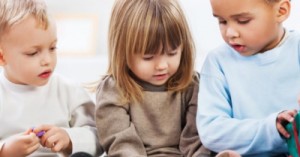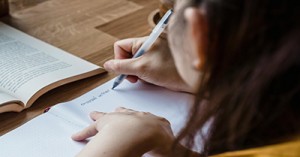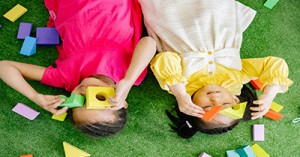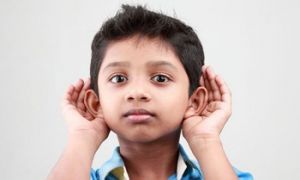EYLF Learning Outcome 2 focuses on "Children Are Connected With And Contribute To Their World." The following article provides information on Key Learning Goals, Strategies To Support Learning Goals, Activities That Link To EYLF Learning Outcome 2, Lesson Plan Sample For EYLF Outcome 2 and more.
Key Learning Goals
-
Sense of Belonging:
-
Children develop a sense of belonging to groups and communities.
-
They understand the reciprocal rights and responsibilities necessary for active community participation.
-
-
Respect for Diversity:
-
Children respond to diversity with respect.
-
They explore the diversity of culture, heritage, background, and tradition.
-
-
Awareness of Fairness:
-
Children become aware of fairness.
-
They recognize that everyone has the right to belong and contribute to many communities.
-
-
Social Responsibility:
-
Children become socially responsible and show respect for the environment.
-
They engage with Aboriginal and Torres Strait Islander Elders and diverse cultural community members to explore their own and others’ connections to the community.
-
-
Active Participation:
-
Children participate in reciprocal relationships.
-
They take action to assist other children to participate in social groups.
-
-
Understanding of Rights and Responsibilities:
-
Children express an opinion in matters that affect them.
-
They contribute to fair decision-making about matters that affect them.
-
By focusing on these learning goals, educators can help children develop a strong sense of connection to their world and foster a positive, inclusive, and respectful environment.
Strategies To Support Learning Goals
Integrating the "My Family" theme into your early childhood education setting can effectively support EYLF Outcome 2 by fostering a sense of belonging, respect for diversity, awareness of fairness, and social responsibility. Here are some practical ways to implement these goals:
1. Sense of Belonging
-
Family Tree Project: Create a family tree display in the classroom where each child can add pictures or drawings of their family members. This helps children identify themselves as part of a family and community group.
-
Welcome Boards: Have a welcome board that features photos and names of children and their families, promoting a sense of community within the early childhood setting.
2. Respect for Diversity
-
Cultural Show and Tell: Encourage children to bring in items that represent their family's culture or traditions. This activity fosters respect for diversity and helps children explore different cultures, heritages, and family structures.
-
Inclusive Storytime: Read books that feature diverse families and cultures. Discuss the stories and emphasize the importance of respecting different ways of being and doing.
3. Awareness of Fairness
-
Circle Time Discussions: Have group discussions about what it means to be fair and how to treat others with kindness and respect. Encourage children to share their thoughts and experiences.
-
Role-Playing Scenarios: Set up role-playing activities where children can act out scenarios involving fairness and inclusion. This helps them understand and practice fair behavior.
4. Social Responsibility
-
Community Engagement: Plan activities that involve the local community, such as visits to a local park or a community garden. This helps children develop social responsibility and respect for their environment.
-
Sustainability Projects: Introduce simple sustainability practices like recycling, planting a garden, or conserving water. Teach children the importance of caring for the environment and their role in it.
5. Model Respect and Empathy:
-
Demonstrate respectful and empathetic behavior in your interactions with children and adults. Children learn a lot by observing.
6. Create an Inclusive Environment:
-
Ensure your classroom environment reflects the diversity of the children. Include books, toys, and materials that represent different cultures, abilities, and family structures.
7. Encourage Open Communication:
-
Provide opportunities for children to express their thoughts and feelings. Listen actively and validate their experiences.
8. Foster Positive Relationships:
-
Build strong, trusting relationships with children and their families. Encourage children to build friendships and support each other.
9. Celebrate Achievements:
-
Acknowledge and celebrate individual and group achievements. This helps build a positive self-image and a sense of belonging.
Activities That Link To EYLF Learning Outcome 2
-
Family Collage:
-
Materials: Magazines, scissors, glue, large paper.
-
Activity: Children cut out pictures from magazines that remind them of their family and create a collage. Discuss the diversity of families and the unique aspects of each child's family.
-
-
Family Story Stones:
-
Materials: Smooth stones, paint, markers.
-
Activity: Children paint or draw pictures of their family members on stones. Use these story stones to tell family stories and explore different family traditions.
-
-
Family Photo Books:
-
Materials: Small photo albums, family photos, stickers, markers.
-
Activity: Children create a photo book of their family. They can decorate the pages and share stories about their family members.
-
-
Grandparents and 'Grand-Friends' Day:
-
Activity: Invite grandparents or 'grand-friends' to the classroom to share stories, participate in activities, or simply spend time with the children. This helps build connections between generations and fosters a sense of community.
-
-
Family Song and Dance:
-
Materials: Music player, musical instruments (optional).
-
Activity: Sing songs about families and encourage children to dance along. Create a family-themed song or dance routine to perform for their families.
-
Promoting a Sense of Community
-
Partnerships with Families: Encourage families to participate in classroom activities and events. This creates a strong partnership between the early childhood setting and families, enhancing the sense of community.
-
Community Projects: Get involved in community projects or events that promote social justice and equity. This helps children understand their role in the broader community and the importance of contributing positively to it.
Community Helpers Exploration
-
Activity: Invite community helpers (like firefighters, nurses, or police officers) to visit the classroom and talk about their roles. This helps children understand and respect different professions and how they contribute to the community.
-
Learning Goal: Develop social responsibility and respect for various roles in the community.
Cultural Celebrations
-
Activity: Organize cultural celebration days where children and their families can share their traditions, foods, and stories.
-
Learning Goal: Promote respect for diversity and awareness of different cultural backgrounds.
Recycling and Sustainability Projects
-
Activity: Introduce simple recycling projects or a small garden where children can plant and care for plants. Discuss the importance of caring for the environment.
-
Learning Goal: Foster a sense of social responsibility and respect for the environment.
Local Nature Walks
-
Activity: Take children on nature walks to explore the local environment. Encourage them to observe and discuss what they see, such as plants, animals, and different types of buildings.
-
Learning Goal: Build connections with the natural world and community.
Creating a Community Map
-
Activity: Create a large map of the local community with the children. Include important landmarks, family homes, and community centers.
-
Learning Goal: Help children understand their place within the community and the interconnectedness of their world.
Family Traditions Show-and-Tell
-
Activity: Encourage children to bring items or photos that represent their family traditions to share with the class. This can include holidays, food, or special events.
-
Learning Goal: Develop respect for diversity and appreciation of different family traditions.
Pen Pal Program
-
Activity: Set up a pen pal program with another early childhood center or a class in a different part of the country/world. Children can exchange letters, drawings, and photos.
-
Learning Goal: Promote connections and communication with others outside their immediate community.
Story Time with Elders
-
Activity: Invite older community members or grandparents to read stories and share their experiences with the children.
-
Learning Goal: Build intergenerational connections and respect for elders.
Collaborative Art Projects
-
Activity: Engage children in large-scale collaborative art projects where they need to work together and share ideas and materials.
-
Learning Goal: Foster teamwork, communication, and a sense of belonging.
Buddy Systems
-
Activity: Pair children as buddies for certain activities. Encourage them to support and help each other throughout the day.
-
Learning Goal: Enhance social connections and empathy.
Lesson Plan Sample For EYLF Outcome 2
Here’s a sample lesson plan designed to support EYLF Outcome 2: Children Are Connected With And Contribute To Their World. This plan includes various activities and strategies to help children develop a sense of belonging, respect for diversity, social responsibility, and an understanding of fairness.
Lesson Plan: "Our Community and Family"
Objective:
To help children understand their connection to their family and community, develop respect for diversity, and foster a sense of social responsibility.
Learning Goals:
-
Children develop a sense of belonging to groups and communities.
-
Children respond to diversity with respect.
-
Children become aware of fairness.
-
Children become socially responsible and show respect for the environment.
Materials Needed:
-
Construction paper, markers, glue, family photos or drawings
-
Cultural artifacts, traditional clothing, and foods
-
Books about families and communities
-
Smooth stones, paint, markers
-
Small containers for planting, soil, seeds
-
Map of the local community
Activities:
1. Family Tree Project (45 minutes)
-
Preparation: Ask children to bring family photos from home.
-
Activity: Help children create a family tree using construction paper and family photos. Discuss different family members and their roles.
-
Learning Goal: Develop a sense of belonging and understanding of family structures.
2. Cultural Show and Tell (30 minutes)
-
Activity: Encourage children to bring in items that represent their family's culture or traditions. They can share stories and explain the significance of each item.
-
Learning Goal: Promote respect for diversity and cultural awareness.
3. Story Time: Community Helpers (20 minutes)
-
Book Reading: Read a book about community helpers, such as "Whose Hands Are These?" by Miranda Paul.
-
Discussion: Talk about the roles of different community helpers and how they contribute to the community.
-
Learning Goal: Foster social responsibility and appreciation for different roles in the community.
4. Family Story Stones (30 minutes)
-
Materials: Smooth stones, paint, markers.
-
Activity: Have children paint or draw pictures of their family members on stones. Use these stones to tell stories about their families.
-
Learning Goal: Develop respect for family diversity and enhance storytelling skills.
5. Planting Project (30 minutes)
-
Materials: Small containers, soil, seeds.
-
Activity: Engage children in planting seeds and caring for their plants. Discuss the importance of taking care of the environment.
-
Learning Goal: Promote social responsibility and environmental awareness.
6. Community Map Project (45 minutes)
-
Materials: Map of the local community, markers, photos.
-
Activity: Create a map of the local community with children. Include important landmarks, family homes, and community centers.
-
Learning Goal: Help children understand their place within the community and the interconnectedness of their world.
Reflection and Closing (15 minutes)
-
Reflection: Gather the children and reflect on the day’s activities. Ask them what they enjoyed and what they learned about their families and community.
-
Closing: End with a calming activity, such as a short mindfulness exercise or a song that promotes a sense of belonging and community.
Assessment:
-
Observe children's participation and engagement in activities.
-
Note children's ability to express their feelings and ideas about their families and community.
-
Assess children's understanding of diversity, fairness, and social responsibility through discussions and activities.
Additional Tips:
-
Partnership with Families: Encourage families to participate in activities and share their cultural practices and traditions.
-
Inclusive Environment: Ensure the classroom reflects the diversity of the children, with books, toys, and materials that represent different cultures and family structures.
-
Model Behavior: Demonstrate respectful and empathetic behavior in your interactions with children and adults.
By implementing this lesson plan, you can help children develop a strong sense of connection to their world, respect for diversity, and a sense of social responsibility, all of which align with EYLF Outcome 2.
Further Reading
EYLF Learning Outcomes Version 2.0 - The following articles list the 5 EYLF Learning Outcomes and their sub-outcomes (Version 2.0).
EYLF Outcome 2 - Children Are Connected With And Contribute To Their World V2.0 - The following lists the sub-outcomes, examples of evidence when children achieve each sub-outcome and how educators can promote and help children to achieve EYLF Outcome 2 - Children Are Connected With And Contribute To Their World V2.0.
EYLF Outcome 3 - Children Have A Strong Sense Of Wellbeing V2.0 - The following lists the sub-outcomes, examples of evidence when children achieve each sub-outcome and how educators can promote and help children to achieve EYLF Outcome 3 - Children Have A Strong Sense Of Wellbeing V2.0.
EYLF Outcome 4 - Children Are Confident And Involved Learners V2.0 - The following lists the sub-outcomes, examples of evidence when children achieve each sub-outcome and how educators can promote and help children to achieve EYLF Outcome 4 - Children Are Confident And Involved Learners V2.0.
EYLF Outcome 5 - Children Are Effective Communicators V2.0 - The following lists the sub-outcomes, examples of evidence when children achieve each sub-outcome and how educators can promote and help children to achieve EYLF Outcome 5 - Children Are Effective Communicators V2.0.







 Here is the list of the EYLF Learning Outcomes that you can use as a guide or reference for your documentation and planning. The EYLF
Here is the list of the EYLF Learning Outcomes that you can use as a guide or reference for your documentation and planning. The EYLF The EYLF is a guide which consists of Principles, Practices and 5 main Learning Outcomes along with each of their sub outcomes, based on identity,
The EYLF is a guide which consists of Principles, Practices and 5 main Learning Outcomes along with each of their sub outcomes, based on identity, This is a guide on How to Write a Learning Story. It provides information on What Is A Learning Story, Writing A Learning Story, Sample
This is a guide on How to Write a Learning Story. It provides information on What Is A Learning Story, Writing A Learning Story, Sample One of the most important types of documentation methods that educators needs to be familiar with are “observations”. Observations are crucial for all early childhood
One of the most important types of documentation methods that educators needs to be familiar with are “observations”. Observations are crucial for all early childhood To support children achieve learning outcomes from the EYLF Framework, the following list gives educators examples of how to promote children's learning in each individual
To support children achieve learning outcomes from the EYLF Framework, the following list gives educators examples of how to promote children's learning in each individual Reflective practice is learning from everyday situations and issues and concerns that arise which form part of our daily routine while working in an early
Reflective practice is learning from everyday situations and issues and concerns that arise which form part of our daily routine while working in an early Within Australia, Programming and Planning is reflected and supported by the Early Years Learning Framework. Educators within early childhood settings, use the EYLF to guide
Within Australia, Programming and Planning is reflected and supported by the Early Years Learning Framework. Educators within early childhood settings, use the EYLF to guide When observing children, it's important that we use a range of different observation methods from running records, learning stories to photographs and work samples. Using
When observing children, it's important that we use a range of different observation methods from running records, learning stories to photographs and work samples. Using This is a guide for educators on what to observe under each sub learning outcome from the EYLF Framework, when a child is engaged in
This is a guide for educators on what to observe under each sub learning outcome from the EYLF Framework, when a child is engaged in The Early Years Learning Framework describes the curriculum as “all the interactions, experiences, activities, routines and events, planned and unplanned, that occur in an environment
The Early Years Learning Framework describes the curriculum as “all the interactions, experiences, activities, routines and events, planned and unplanned, that occur in an environment


